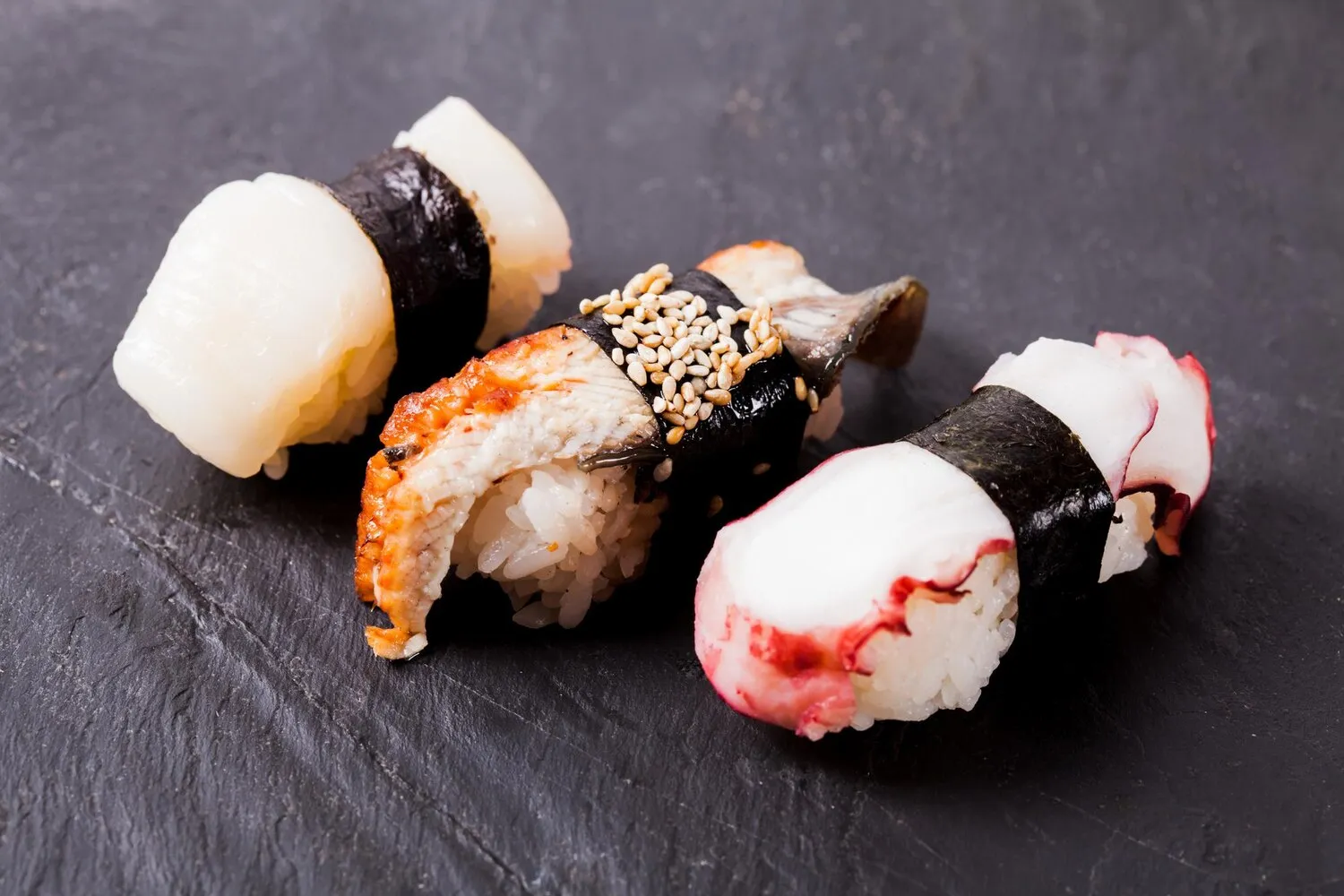
Nigiri
Fresh nigiri selections.
Nutrition Facts
* The % Daily Value (DV) tells you how much a nutrient in a serving of food contributes to a daily diet. 2,000 calories a day is used for general nutrition advice.
Nigiri sushi originated in Japan as a method of preserving fish using fermented rice. This practice evolved over centuries, eventually leading to the fresh, vinegar-rice-based nigiri we know today, particularly popularised in Edo (present-day Tokyo) during the Edo period (1603-1868).
Nigiri is deeply ingrained in Japanese culinary culture, representing artistry, freshness, and precision. Its preparation and presentation are considered an art form, reflecting respect for ingredients and tradition.
Omakase
Often, sushi restaurants offer 'omakase' where the chef selects the nigiri based on the freshest available fish and their expertise, providing a curated dining experience.
Sushi Etiquette
There are specific etiquette rules associated with eating nigiri, such as using chopsticks or fingers, dipping the fish side into soy sauce, and eating the nigiri in one or two bites.
Seasonal Ingredients
Nigiri often features seasonal fish, reflecting the Japanese appreciation for the changing seasons and the availability of the freshest ingredients.
Nigiri offers a delicate balance of umami, acidity, and sweetness, primarily derived from the fresh fish and seasoned sushi rice.
The primary flavor comes from the type of fish used. Tuna (maguro) offers a rich, savory taste, while salmon (sake) provides a fatty, melt-in-your-mouth experience. White fish like sea bream (tai) are mild and clean. The vinegared sushi rice (shari) provides a subtle tang and sweetness, complementing the fish. Wasabi adds a pungent kick, while soy sauce (shoyu) enhances the umami. Other flavors can include yuzu zest or other citrus to further refine the taste profile.
Freshness is Key
Always choose a reputable sushi restaurant that prioritizes fresh, high-quality fish. The taste and texture of the fish are paramount.
Temperature Matters
Nigiri should be served at the appropriate temperature to enhance the flavors. The rice should be slightly warm, and the fish should be cool.
Soy Sauce Usage
Avoid over-soaking the nigiri in soy sauce, as it can mask the delicate flavors of the fish. Lightly dip the fish side only.
Wasabi Consideration
Use wasabi sparingly, as its intense flavor can overwhelm the taste of the fish, unless added by the Chef beforehand.
Explore additional Japanese dishes and restaurants
Explore JapaneseDiscover top dining spots and culinary experiences in Halifax.
Explore HalifaxLearn more about the food culture, restaurant scene, and culinary heritage of Canada.
Explore Canada